- Home
- James Rollins
The Last Oracle Page 10
The Last Oracle Read online
Page 10
Page 10
“It’s heavy,” Elizabeth explained. “Took six men to uncrate it. But there’s a crowbar among the tools in back. We should be able to tilt it up. But we’ll have to be careful. ”
“I’ll go get it,” Kowalski said.
As he stepped away, the telephone on Elizabeth’s desk rang. She crossed toward it and checked the caller ID on the handset. “It’s security. ” She checked her wristwatch, then glanced to Gray. “It’s already after closing hours. They must be checking on how long I’ll be working down here. ”
“Tell them at least another hour. ”
She nodded and picked up the phone. She confirmed who she was, then listened. Her eyes widened. “I understand. We’ll be right up. ” She hung up the phone and turned to Gray. “Someone called in a bomb threat. Here at the museum. They’re evacuating the building. ”
Gray remained silent. He knew such a threat, especially now, was no coincidence. He read the same understanding in the woman’s eyes. “Someone knows,” he said slowly. “After today’s shooting on the Mall, no one will dismiss a bomb threat. It’s the perfect cover to run a covert sweep of the building. ”
He turned to study the omphalos.
Time was running out for delicacy.
Kowalski must have understood this, too. He returned from the back of the storage room. “I heard,” he said. Instead of the padded crowbar, he hefted a large sledgehammer on his shoulder. “Get back. ”
“No!” Elizabeth warned.
But Kowalski clearly wasn’t taking no for an answer. He closed the distance in one stride, raised the hammer over his head, and swung it down.
Elizabeth gasped in fear for the centuries-old artifact.
But instead of hitting the ancient stone, the sledgehammer slammed into the slats of the pallet that supported the omphalos. Wood splintered and broke. Kowalski lifted the hammer again and cracked more slats on the same side.
With half its weight now unsupported, the great stone tilted toward the crushed side of the pallet—then slowly toppled over, upending itself. More slats were pulverized under its weight, but it seemed undamaged from its slow roll.
Kowalski shouldered the hammer.
Elizabeth stared at the man, her expression wavering between horror and awe.
Gray hurried to the pallet and dropped to a knee. The object hidden under the omphalos now rested in plain view. It was not a polished stone. Gray lifted his Gamma-Scout reader toward it. It read hot, but no worse than the binoculars they’d found earlier.
Satisfied, Gray retrieved it and stood.
Elizabeth stumbled back as he straightened.
Kowalski’s eyes tightened. “A skull? Is that what this is all about?”
Gray examined it closer. The skull was small and missing its lower jaw. He turned it over. The remaining teeth displayed prominent fangs in a protuberant muzzle. “Not human,” he said. “From the size and shape of the cranium, I’d say it’s simian. Possibly a chimpanzee. ”
Kowalski’s expression soured even further. “Great,” he drawled out. “More monkeys. ”
Gray knew the large man had developed a distaste for all things simian following a previous mission. Something to do with baboons…or apes. Gray could never get a straight story from the man.
“But what…what’s that attached to the skull’s side?” Elizabeth pointed out.
Gray knew what she meant. It was hard to miss. Affixed to the temporal bone, just above the opening to the ear canal, rested a curved block of stainless steel.
“I’m not sure,” he answered. “Maybe a hearing aid. Perhaps even one of the new cochlear implants. ”
“For a damn monkey?” Kowalski asked.
Gray shrugged. “We’ll have to examine it later. ”
“Why did my father bring that here?”
Gray shook his head. “I don’t know. But someone wanted to stop him. And someone still wants it back. ”
“What do we do?”
“We find a way out of here. Before anyone knows we recovered it. ”
Gray took a moment to search the rest of the pallet, in case the professor had left anything else here. Like a note explaining everything. One could always hope. He pointed his flashlight into the hollow cavity of the upended omphalos.
Nothing.
As he swung the beam away, the light glanced over the inner surface. Something caught his eye there. It looked like a spiraling groove carved into its surface, starting at the lip and corkscrewing up toward the hole. He reached a finger to it and realized it was a single long line of cursive script. Leaning over, he narrowed the flashlight’s beam upon the writing.
Elizabeth noted his attention. “Ancient Sanskrit. ”
Gray straightened back. “What’s Sanskrit doing on the inside—?”
Kowalski cut him off. “Does it friggin’ matter already?” He pointed a thumb toward the door. “Remember that bomb scare. Shouldn’t we be haulin’ ass out of here?”
Gray straightened. The man had a point. They’d wasted enough time. The sweep of the building was probably already—
A muffled shout echoed from the hallway.
Kowalski rolled his eyes in a plain expression of I told you so.
“What do we do?” Elizabeth asked.
7:37 P. M.
Painter knocked on the half-open door to the pathologist’s office.
“Come in,” Malcom called out. “Jones, do you have the data from—?”
Painter pushed the door wider just as Malcolm swung around in his desk chair. The pathologist still wore a set of blue scrubs. His glasses rested atop his head. He was rubbing at the bridge of his nose when he noted who stood in his doorway.
His eyes widened. “Director…” He made a motion to stand, but Painter waved him to remain seated as he entered.
“Brant alerted me that you had called. I was just heading back to my office from video surveillance. ”
“Any footage of the shooter?”
“Not so far. We’re still combing records. But it’s a mountain of videos to sift. And some sources are slow to respond. ”
Since 9/11, surveillance of the capital had been heightened. For a full ten miles in all directions around the White House, multiview cameras monitored every square foot of streets, parks, and public spaces. And over 60 percent of interior spaces, too. Several cameras had picked up pieces of Dr. Archibald Polk’s path across the Mall. They confirmed what Gray had assessed with his radiological tracker. But nagging gaps persisted. Though they had footage of Polk collapsing in Gray’s arms, no camera caught even a glimpse of rifle flash or any sign of the shooter.
It was worrisome.
Painter was beginning to suspect that the sniper had known about the cameras and had found a hole in the surveillance net in which to hide. Or worse yet, someone could have tampered with the Mall’s footage and purposefully deleted any evidence of the assassin.
Either way, such collusion suggested that Professor Polk’s murderer might have powerful ties here in Washington. But who and where? If Polk’s history as a Jason had anything to do with the murder, then it opened a Pandora’s box of possibilities. The Jasons had their fingers in top secret projects of every shade from gray to deep black.
Painter knew he would be getting no sleep tonight.
None of them would.
“Any word from Gray?” Malcolm asked, shifting a pile of papers from a chair and offering a seat to Painter.
“He’s searching the natural history museum. Polk’s trail led there. ”
“Hopefully he’ll find something, but that was also why I patched a call to you. I may have discovered more bread crumbs to follow. ”
Curious, Painter sank into the chair. Malcolm rotated his computer’s flat-screen monitor to a better angle for Painter to view.
“What did you find?” Painter asked.
“Something curious. I don’t know
really what to make of it, but it might give us someplace to continue the investigation. Knowing the victim was suffering from radiation poisoning, I sought some clue to the source. Initial examination of Polk’s gastrointestinal tract and liver showed he didn’t ingest anything radiological in nature. ”
“So no dinner poisoned with polonium-210 or the like?”
Malcolm nodded. “From the degree of radiodermatitis burns to his skin, I was fairly certain the radiation came from an environmental source. He must have been in some type of hot zone. Microanalysis of his hair showed the exposure was acute in nature. He’d been poisoned less than a week ago. ”
“But where—?”
Malcolm held up a hand for patience and used his other to tap at his keyboard and bring up a map of the world on the monitor. “Trace amounts of radioactive debris were caught in the deep alveolar pockets in his lungs. Like coal dust in a miner’s lung. I ran the sample through a mass spectrograph and was able to determine a rough breakdown of the isotope content. ”
He pointed to his screen. The left side of the computer monitor began to scroll with data. “Such information is often as unique as a fingerprint. It just took tapping into IAEA database in Vienna. ”
Painter noted that the open search window had the organization’s name stenciled at the top: INTERNATIONAL ATOMIC ENERGY AGENCY.
“The agency monitors hot spots around the world: mines, reactors, industrial sources. Despite what some might think, not all radiation is the same. We’re talking about material that is constantly decaying, whose isotope content varies, depending on where it might have been mined and how it was processed. The end result is radiation signatures unique to each use-site. ”
“And the debris in the professor’s lungs?”
“I ran a search through the IAEA database and got a hit. ”
“You know where Polk was exposed?”
He nodded to the screen as the scrolling stopped and the world map blew up, zooming into one location in central Russia. A name appeared in a highlighted box, a name synonymous with radiological disaster.
CHERNOBYL

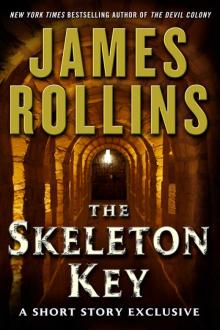 The Skeleton Key
The Skeleton Key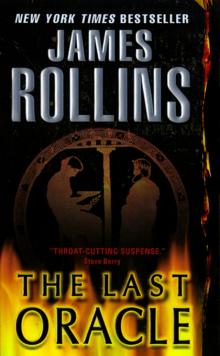 The Last Oracle
The Last Oracle The Judas Strain
The Judas Strain Black Order
Black Order Sandstorm
Sandstorm Ghost Ship
Ghost Ship The Devil Colony
The Devil Colony Subterranean
Subterranean The Doomsday Key
The Doomsday Key The 6th Extinction
The 6th Extinction Bloodline
Bloodline Jake Ransom and the Howling Sphinx
Jake Ransom and the Howling Sphinx The Midnight Watch
The Midnight Watch Map of Bones
Map of Bones The Demon Crown
The Demon Crown Deep Fathom
Deep Fathom Sigma Guide
Sigma Guide Kowalski's in Love
Kowalski's in Love Jake Ransom and the Skull King's Shadow
Jake Ransom and the Skull King's Shadow Excavation
Excavation The Seventh Plague
The Seventh Plague Altar of Eden
Altar of Eden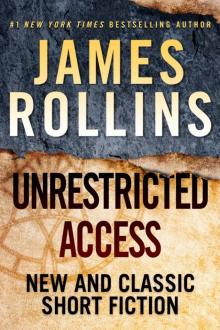 Unrestricted Access: New and Classic Short Fiction
Unrestricted Access: New and Classic Short Fiction Indiana Jones and the Kingdom of the Crystal Skull
Indiana Jones and the Kingdom of the Crystal Skull Crucible
Crucible The Eye of God
The Eye of God The Bone Labyrinth
The Bone Labyrinth The Last Odyssey: A Thriller
The Last Odyssey: A Thriller Unrestricted Access
Unrestricted Access Amazonia
Amazonia Blood Brothers: A Short Story Exclusive
Blood Brothers: A Short Story Exclusive Map of Bones: A Sigma Force Novel
Map of Bones: A Sigma Force Novel The Skeleton Key (sigma force)
The Skeleton Key (sigma force)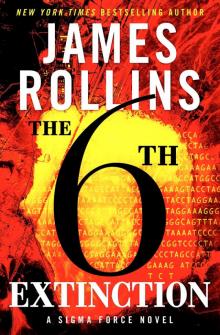 Sigma Force 10 - The Sixth Extinction
Sigma Force 10 - The Sixth Extinction Innocent Blood
Innocent Blood Map of Bones sf-2
Map of Bones sf-2 The Eye of God: A Sigma Force Novel
The Eye of God: A Sigma Force Novel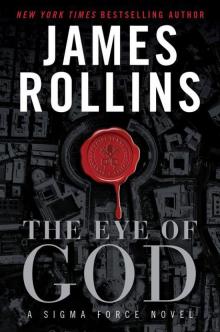 The Eye of God: A Sigma Force Novel sf-9
The Eye of God: A Sigma Force Novel sf-9 The Pit
The Pit Indiana Jones and the The Kingdom Of The Crystal Skull
Indiana Jones and the The Kingdom Of The Crystal Skull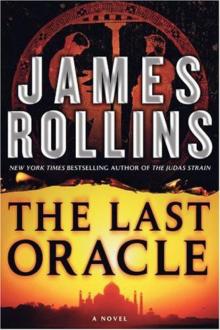 The Last Oracle (2008) sf-5
The Last Oracle (2008) sf-5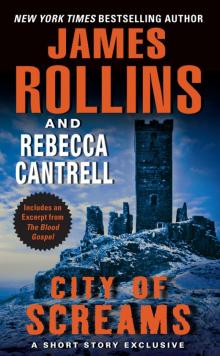 City of Screams
City of Screams The Doomsday Key and The Last Oracle with Bonus Excerpts
The Doomsday Key and The Last Oracle with Bonus Excerpts The Judas Strain sf-4
The Judas Strain sf-4 Blood Infernal
Blood Infernal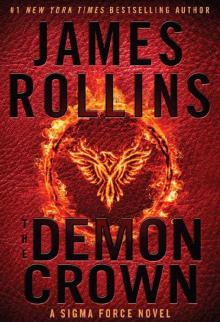 The Demon Crown: A Sigma Force Novel
The Demon Crown: A Sigma Force Novel War Hawk: A Tucker Wayne Novel
War Hawk: A Tucker Wayne Novel SANDSTORM sf-1
SANDSTORM sf-1 Bloodline: A Sigma Force Novel
Bloodline: A Sigma Force Novel Amazonia: a novel
Amazonia: a novel The Last Oracle: A Sigma Force Novel
The Last Oracle: A Sigma Force Novel City of Screams (the order of the sanguines)
City of Screams (the order of the sanguines)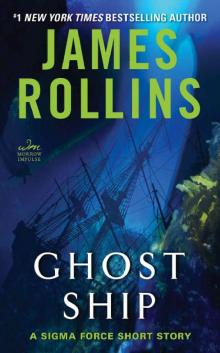 Ghost Ship: A Sigma Force Short Story
Ghost Ship: A Sigma Force Short Story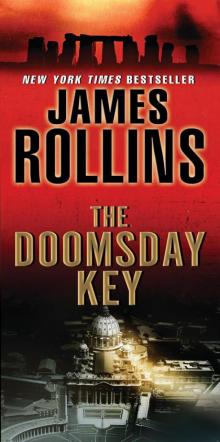 The Doomsday Key: A Sigma Force Novel
The Doomsday Key: A Sigma Force Novel